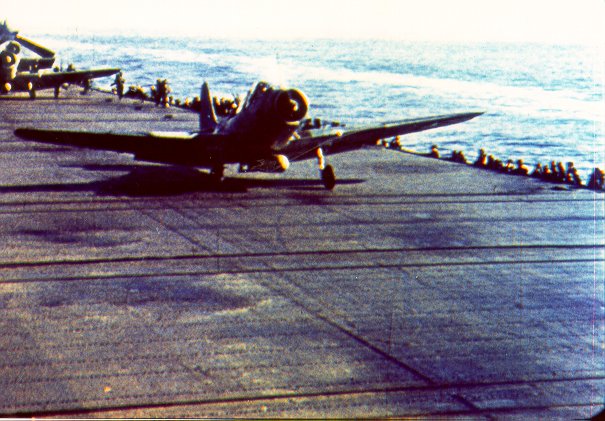

Late in January 1942, the Enterprise joined the Yorktown near the Samoan Islands.Under the command of Vice Admiral William "Bull" Halsey, these two carriers, along with several crusiers and destroyers, raided into the Japanese-held Gilbert and Marshell Islands during the first days of Febuary.After inflecting some damage, they returned to Pearl Harbor.Then, Halsey's Enterprise group struck Wake Island on Febuary 24th, and Marcus Island on March 4th.Earlier in Febuary, a task force built around the Lexington, under Vice Admiral Wilson Brown, made a daring attempt to strike the growing base at Rabual, on New Britian.The Japanese discovered the force before it could make its attack, and struck back with land-based planes.Fighter planes from the Lexington fought off the attackers, but, knowing the his attack would not be a surprise, he withdrew.Then, Yorktown joined in the fight with Brown's Lexington group.He decided to attack Japanese forces that had just landed around Huon Gulf in northeastern New Guinea.He surprised the Japanese this time, sending his attack planes over the Owen Stanley Mountains of eastern New Guinea.This was the most successful raid the U.S. Carriers had made yet; they sank two small warships and a transport, and damaged several other vessels.
Meanwhile, back in the States, the Navy and Army Air Force had begun joint preparations for an even more daring raid.Sixteen Army North American B-25 Mithchell's were loaded aboard the carrier U.S.S. Hornet (the B-25 was never meant to be used on a carrier, being a two-engined medium bomber).The task force then sailed west across the Pacific to join Halsey's Enterprise group.The Army bombers, commanded by Lieutenant Colonel James H. Doolittle, flew off the Hornet on April 18th, and headed for the Japanese capitol, Tokyo.The bombs they dropped caused little damage to the Japanese physically, but the military and government leaders were greatly alarmed to find that the Americans were able and willing to make such an attack.Save for one plane that landed in Russian Vladivostok, all the others were lost.But, most of the flyers crash-landed in China.Like earlier raids, this carrier attack didn't interfere with Japanese plans of conquest and consoildation.But, it did serve notice that the Americans were willing to fight the Japanese and strike back.And to show that the U.S. Navy was still very active in the Pacific.This attack helped moral of the fighting men in the dark days of early 1942.